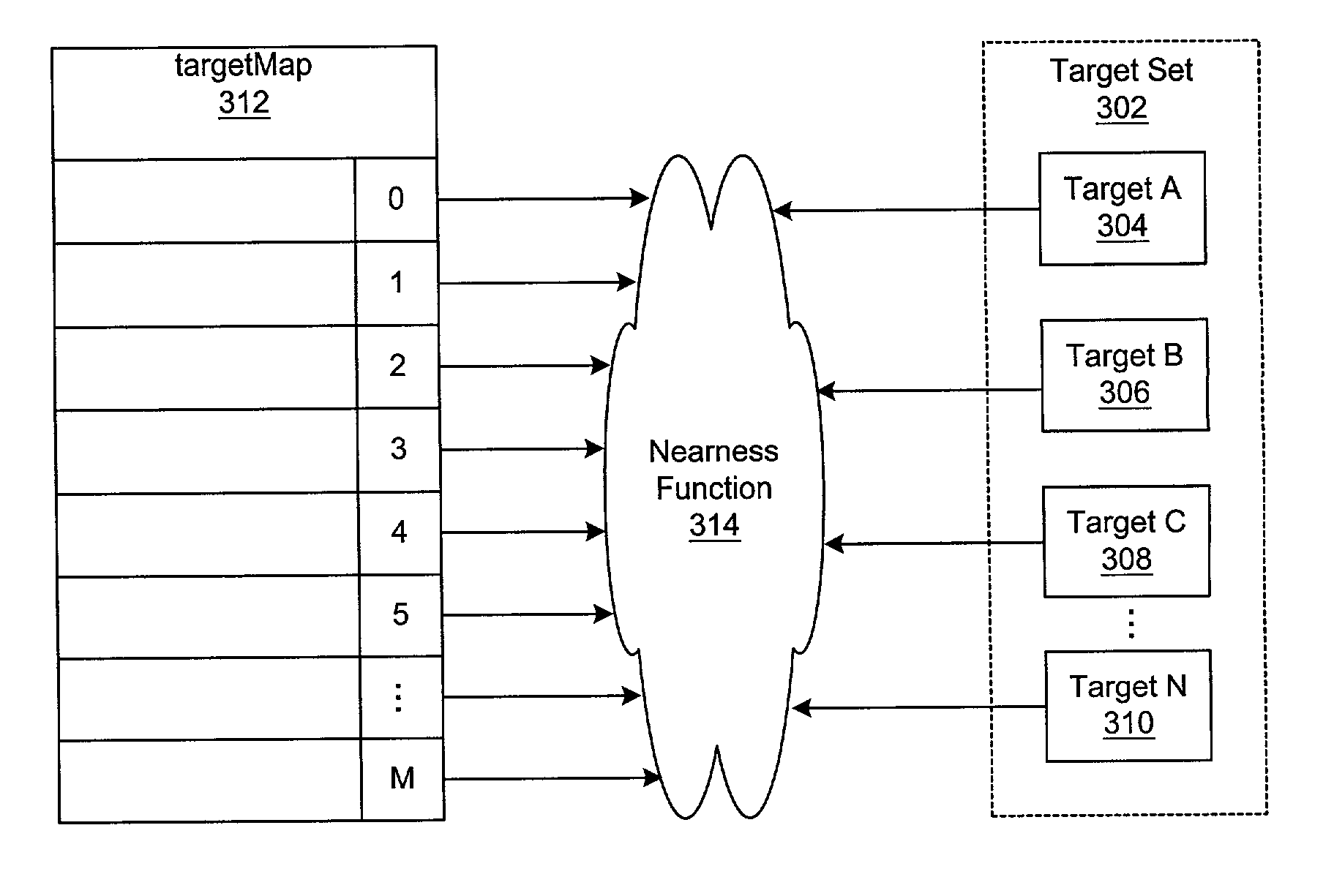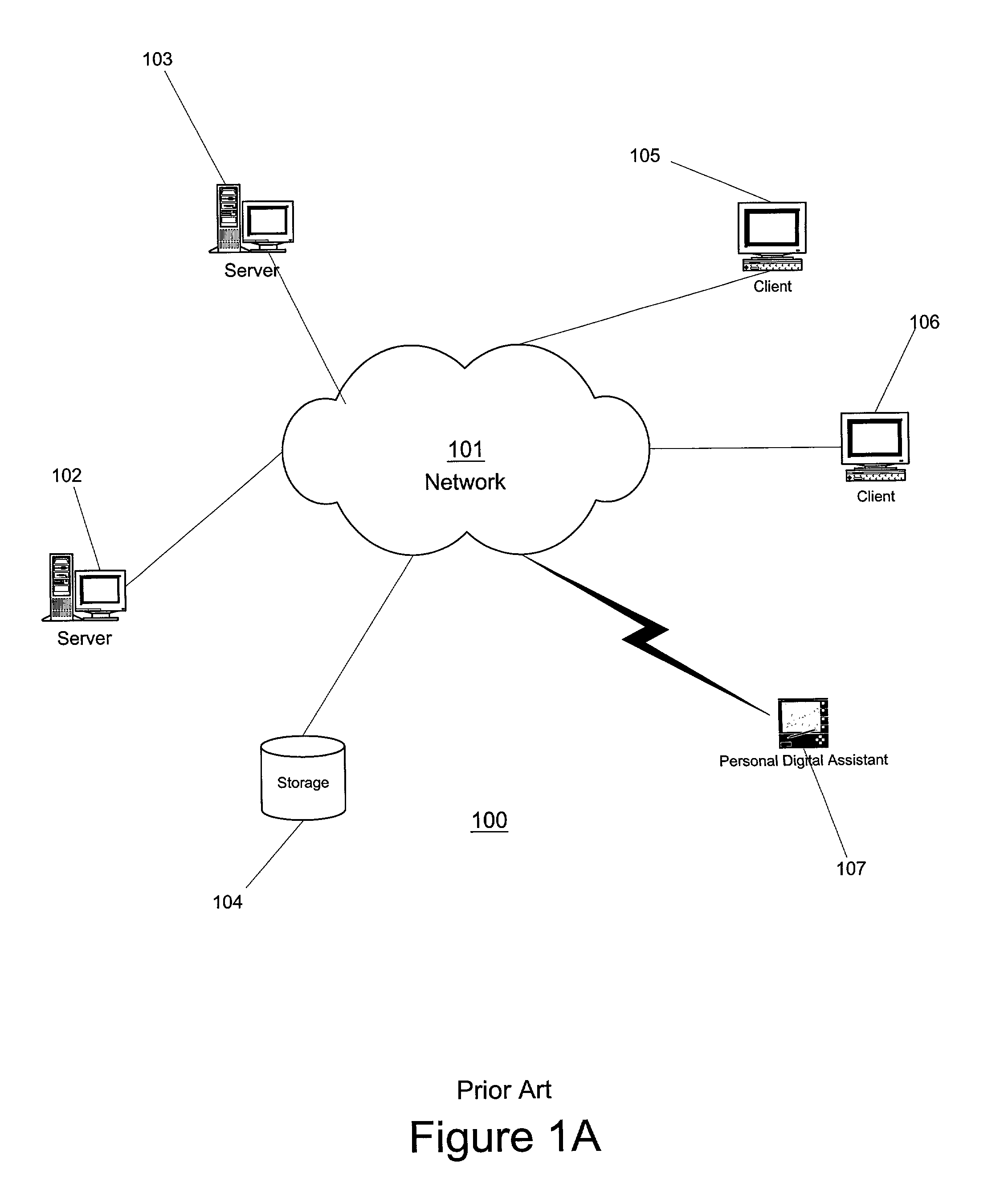Stable hash-based mapping computation for a dynamically varying target set
a target set and mapping computation technology, applied in the field of enhancing data access and control, can solve the problems of slowing down the distribution computation, unable to ensure that all hash table entries are used in any given period of time, and defeating a major advantage of employing a hashing function
- Summary
- Abstract
- Description
- Claims
- Application Information
AI Technical Summary
Benefits of technology
Problems solved by technology
Method used
Image
Examples
Embodiment Construction
[0030]With reference now to the figures, FIG. 1A depicts a typical network of data processing systems, each of which may implement the present invention. Distributed data processing system 100 contains network 101, which is the medium used to provide communications links between various devices and computers connected together within distributed data processing system 100. Network 101 may include permanent connections, such as wire or fiber optic cables, or temporary connections made through telephone or wireless communications. In the depicted example, server 102 and server 103 are connected to network 101 along with storage unit 104. In addition, clients 105-107 also are connected to network 101. Clients 105-107 and servers 102-103 may be represented by a variety of computing devices, such as mainframes, personal computers, personal digital assistants (PDAs), etc. Distributed data processing system 100 may include additional servers, clients, routers and other devices not shown. I...
PUM
 Login to View More
Login to View More Abstract
Description
Claims
Application Information
 Login to View More
Login to View More - R&D
- Intellectual Property
- Life Sciences
- Materials
- Tech Scout
- Unparalleled Data Quality
- Higher Quality Content
- 60% Fewer Hallucinations
Browse by: Latest US Patents, China's latest patents, Technical Efficacy Thesaurus, Application Domain, Technology Topic, Popular Technical Reports.
© 2025 PatSnap. All rights reserved.Legal|Privacy policy|Modern Slavery Act Transparency Statement|Sitemap|About US| Contact US: help@patsnap.com



